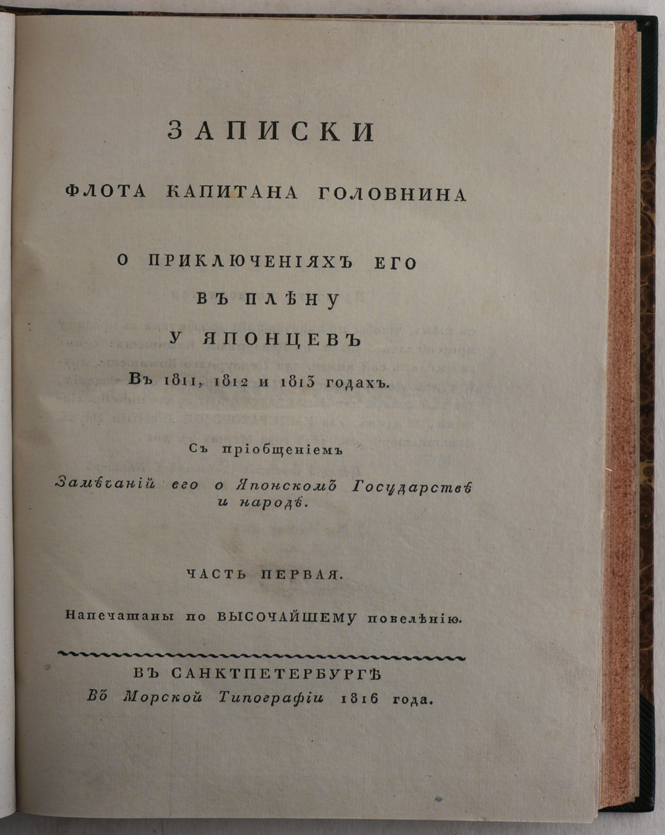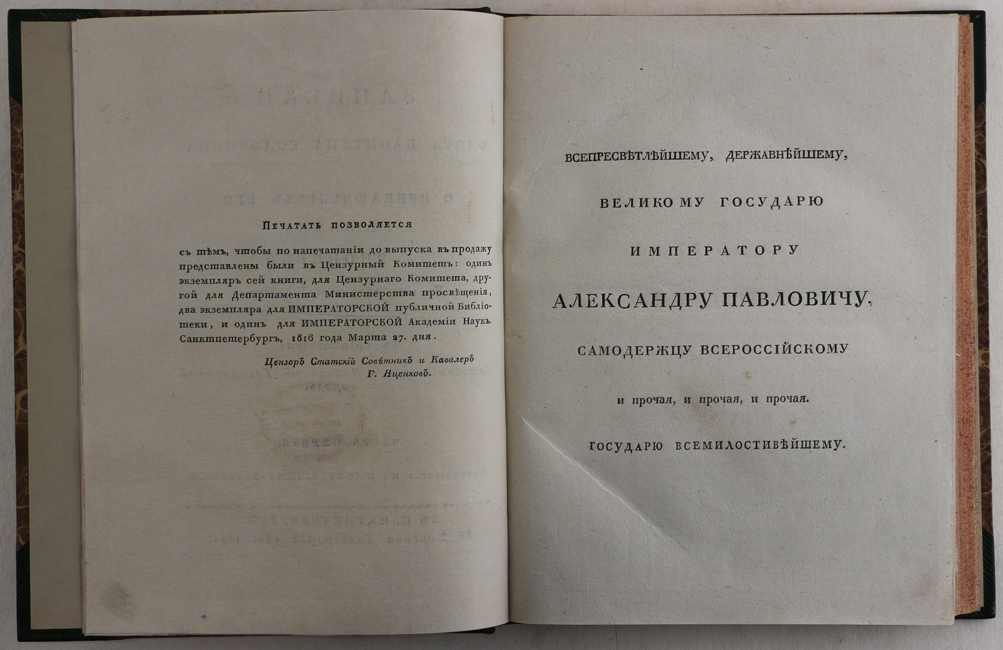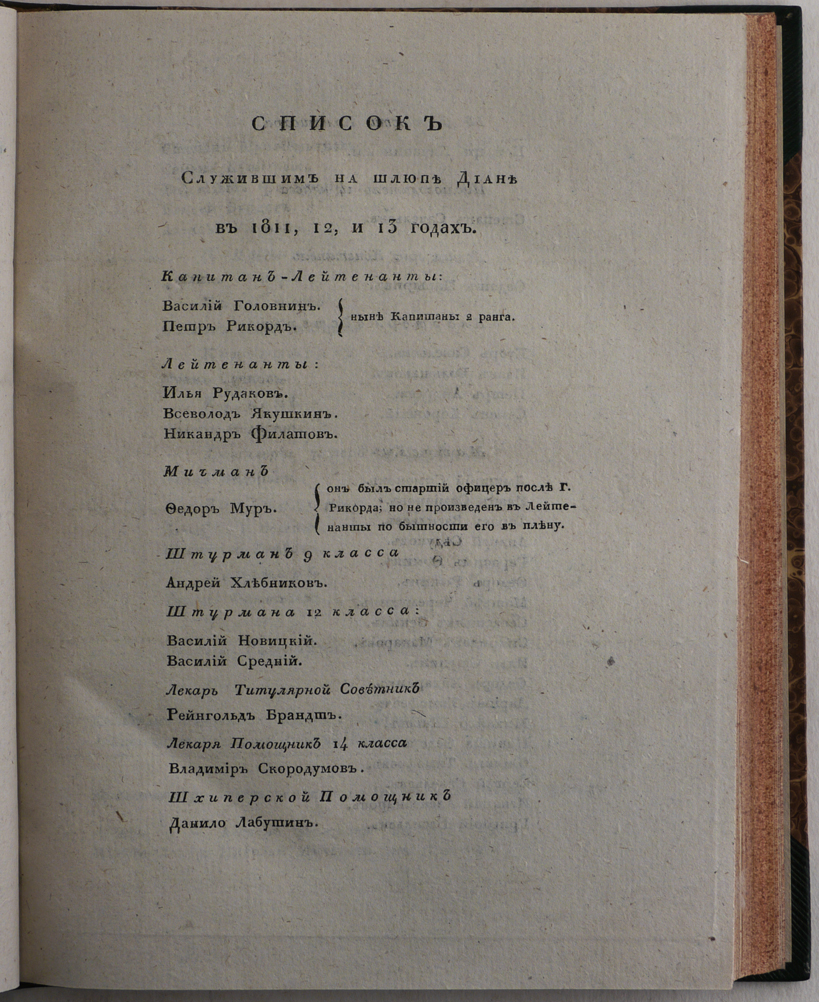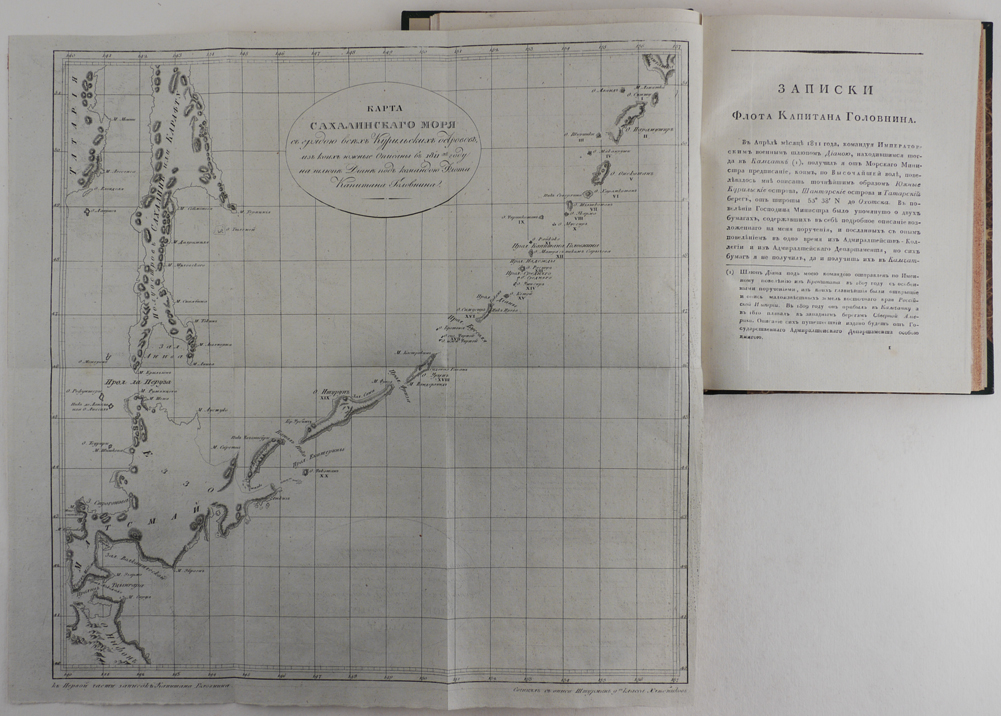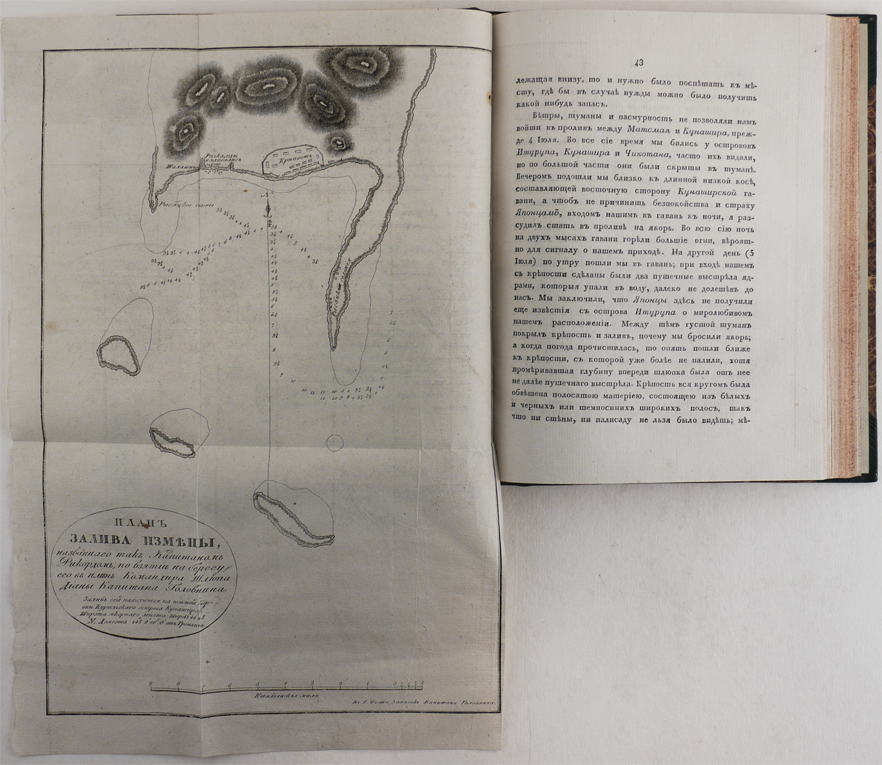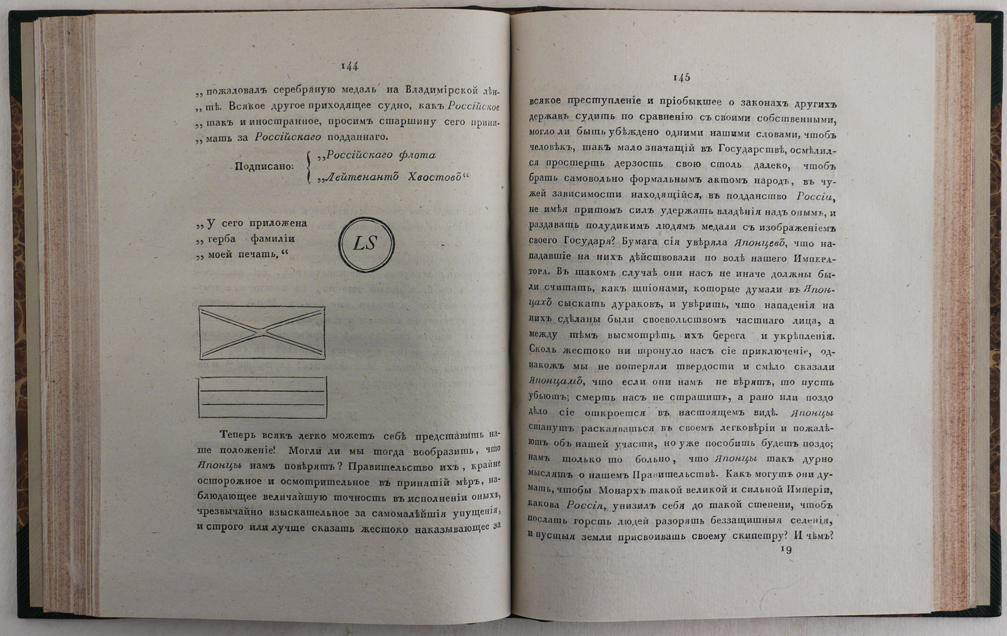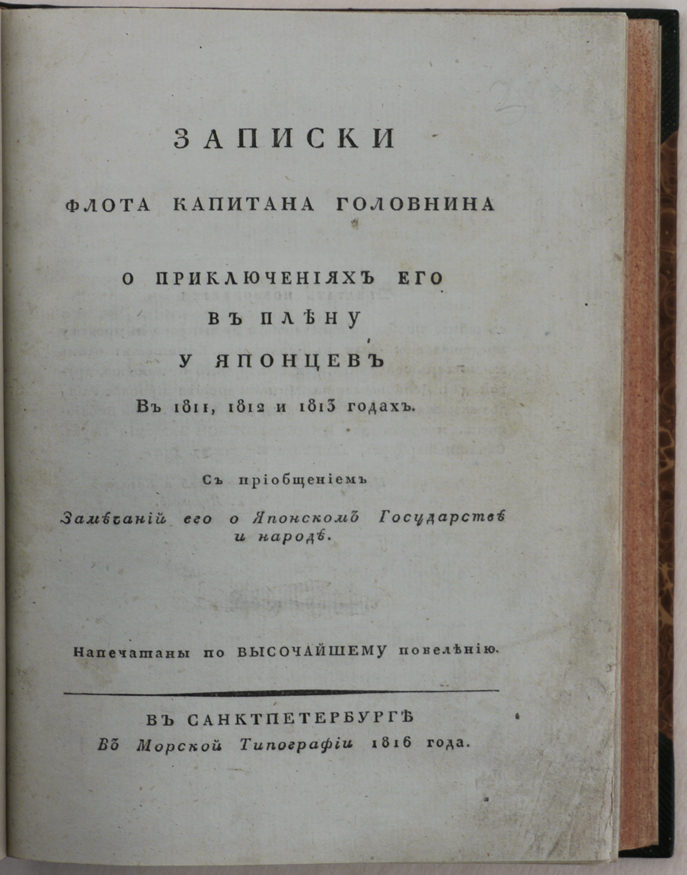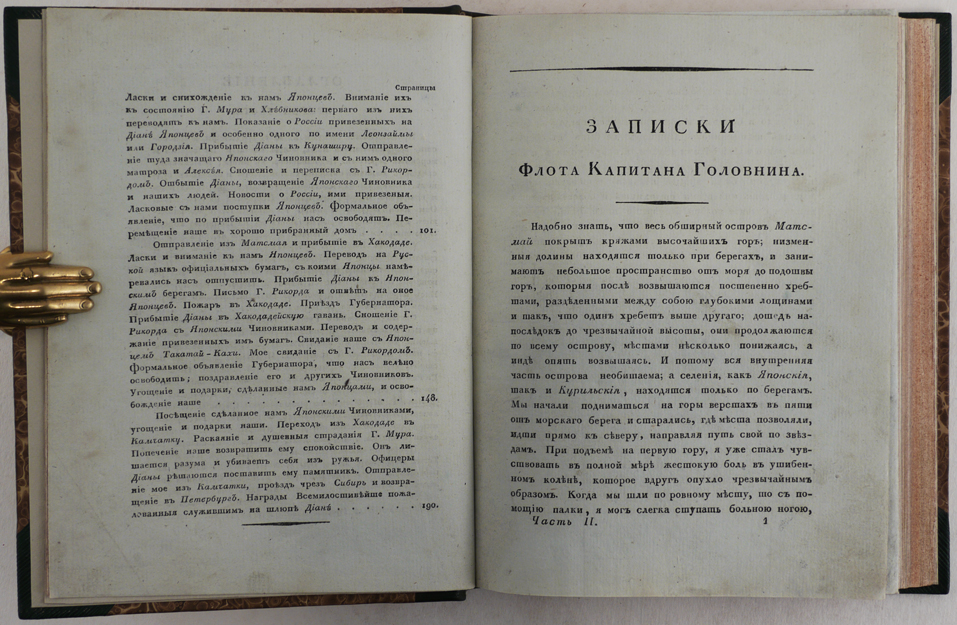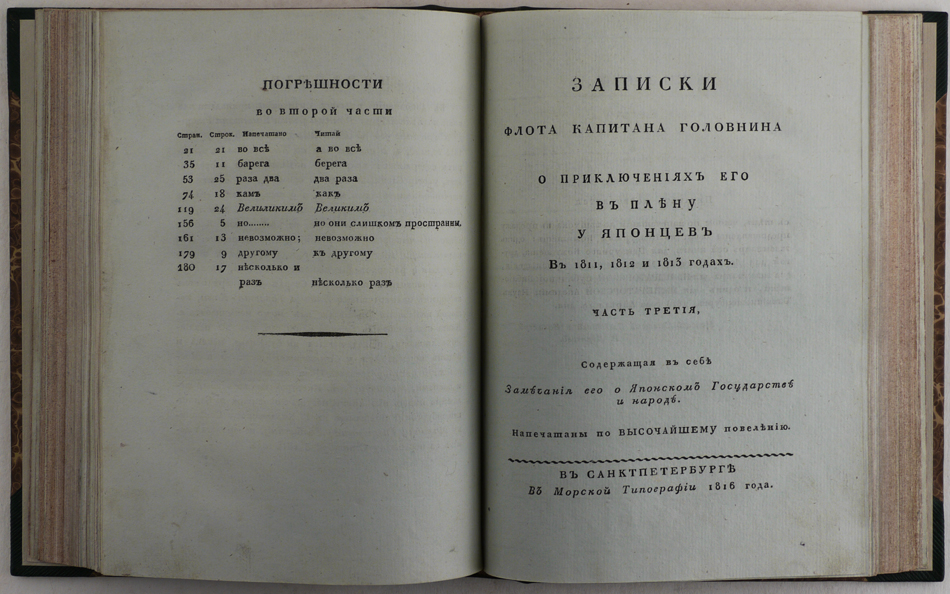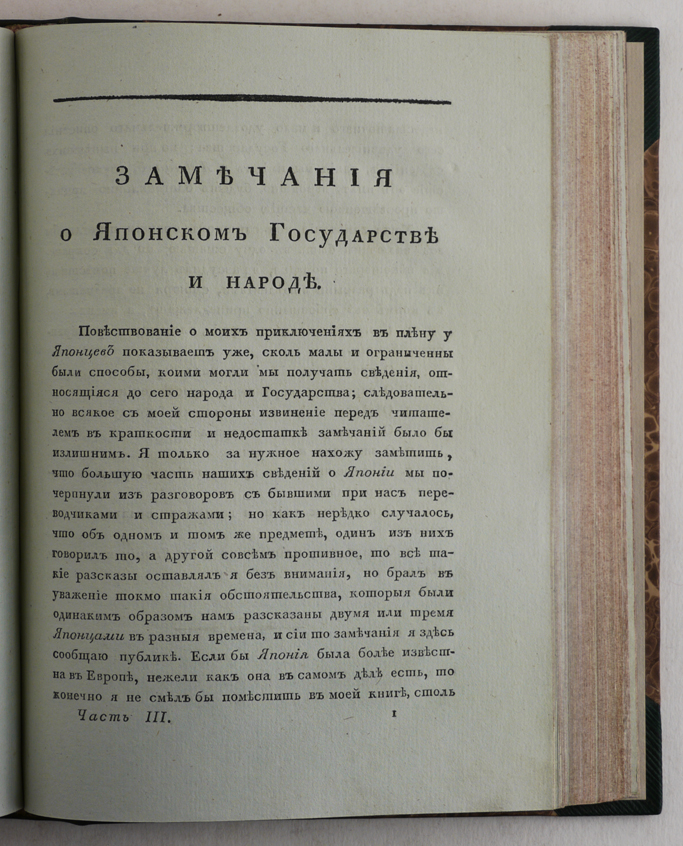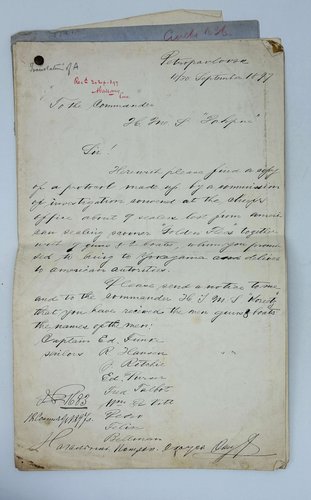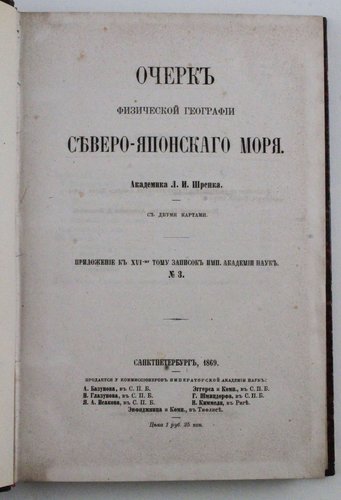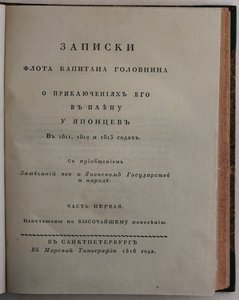
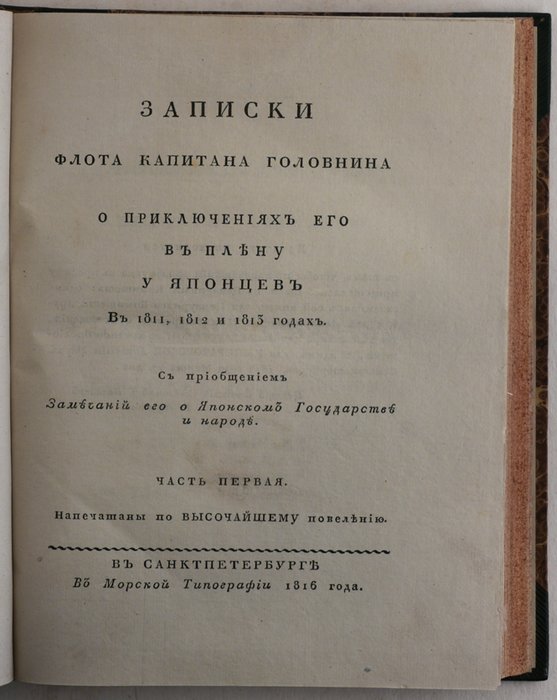
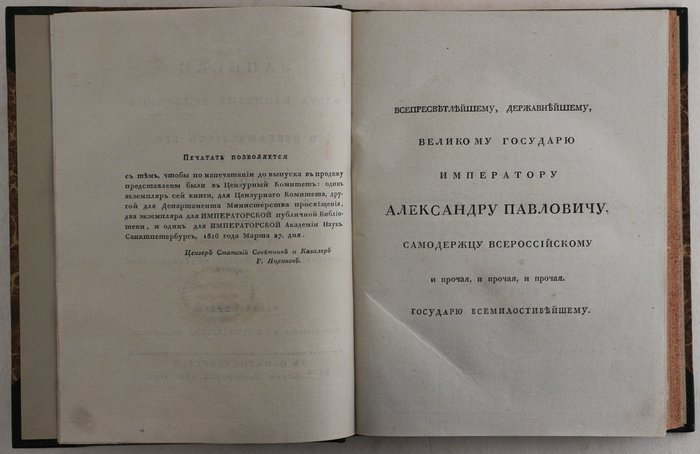
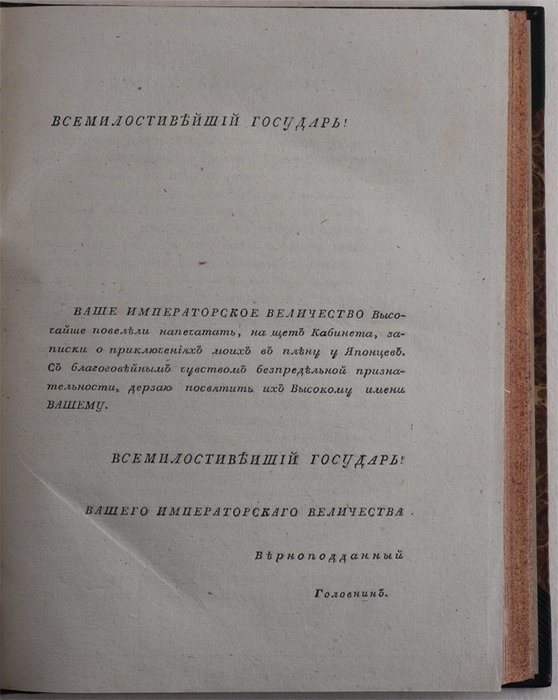
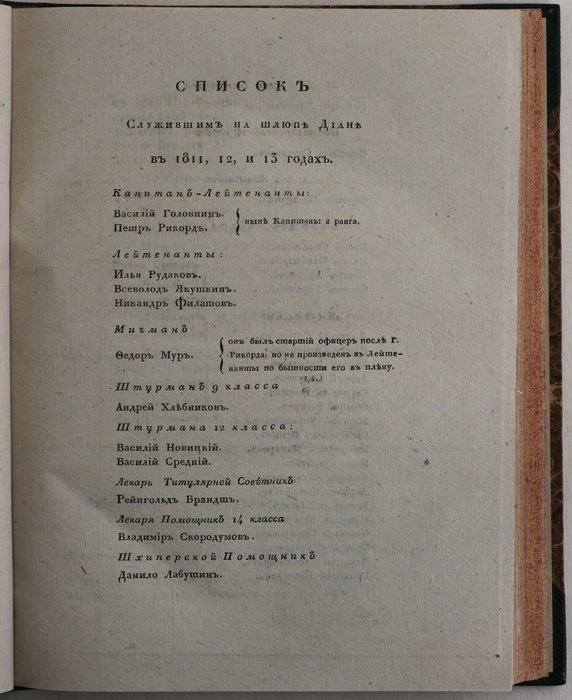
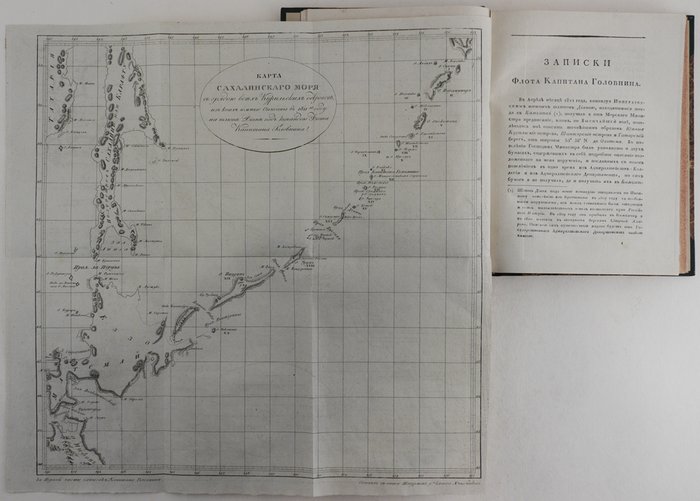
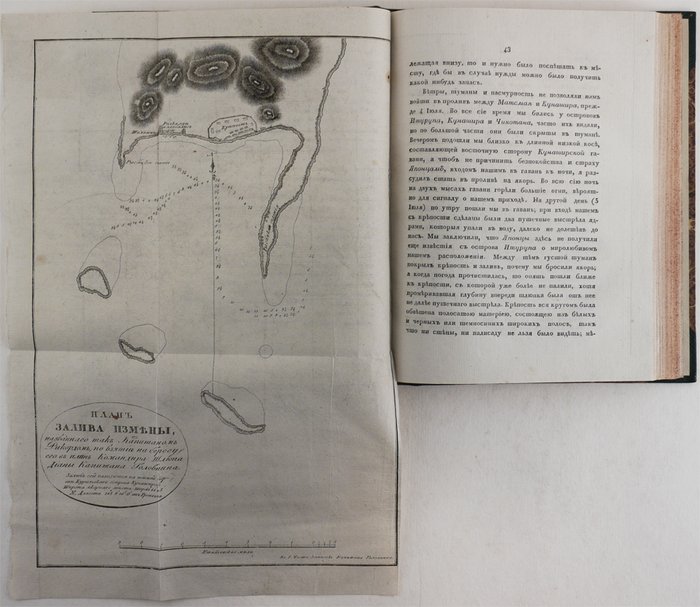
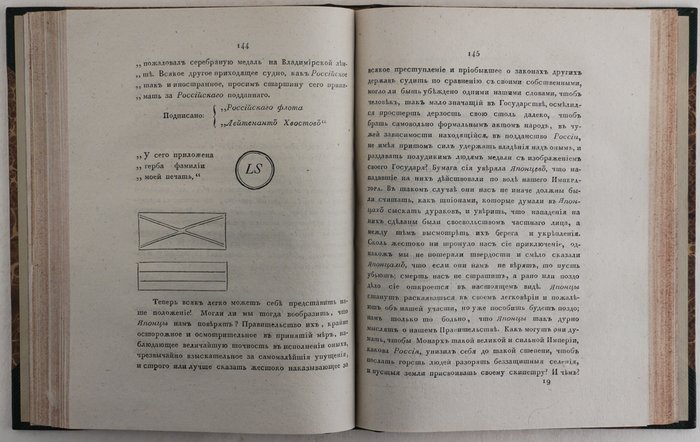

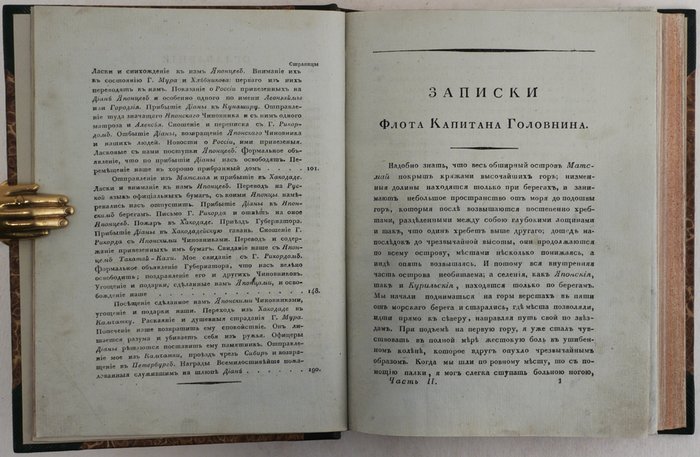
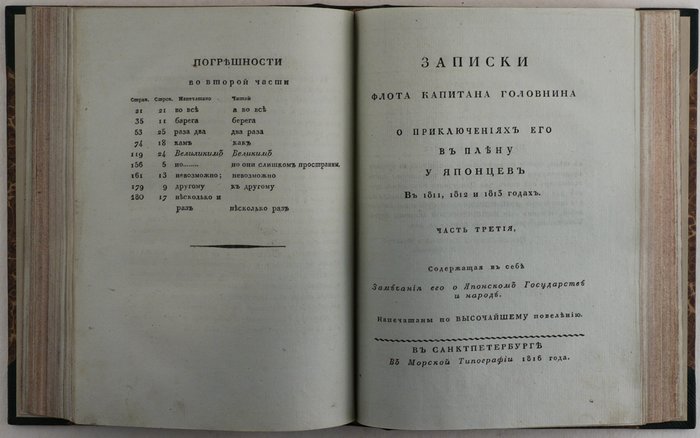
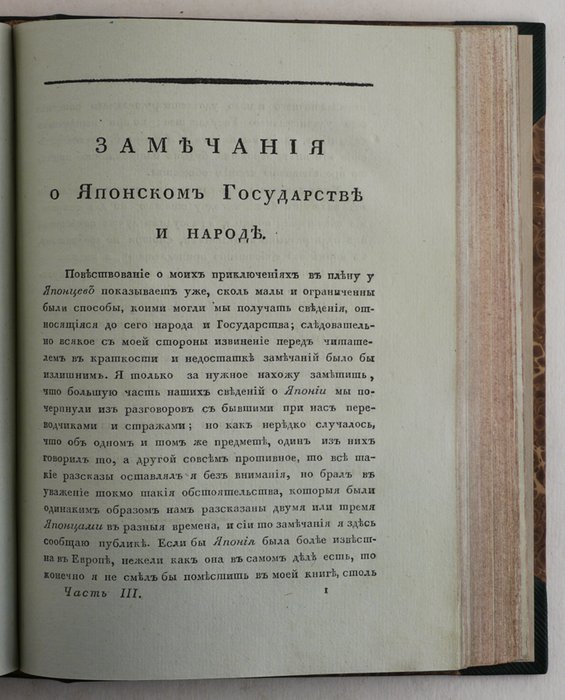
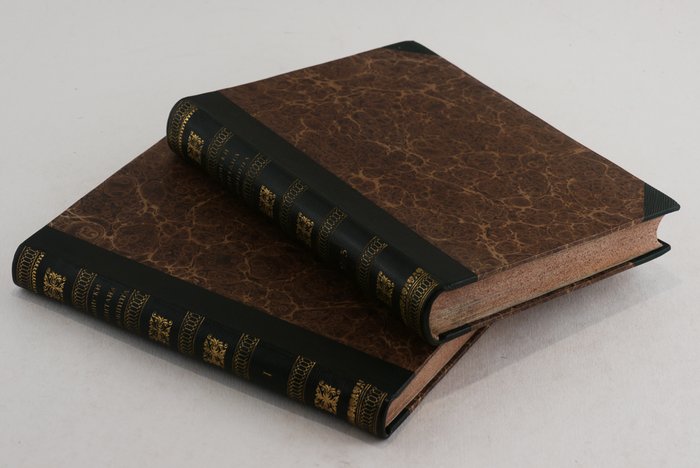
#Q1
1816
First Edition. In three parts (bound in two volumes). Quarto. [16], 285, [2]; [4], 206, [2]; [4], 169, [2] pp. With two folding copper engraved maps and a small sketch in text (vol. 1, p. 144).
Period style dark green half straight grained morocco with marbled papered boards; spine with gilt tooled decorative ornaments and gilt lettered title; all edges speckled. Title page of part 1 with a minor restoration not affecting text, title page of part two with previously removed part number, but otherwise a very good set.
Rare Russian work as only eleven copies were found in Worldcat (Stanford University, University of Missouri-Columbia, Cleveland Public Library, Syracuse University, Columbia University in the city of New York, New York Public Library, Harvard University, National Diet Library in Japan, British Library, Berlin State Library, University of Strasbourg).
Important account of this early Russian voyage in the Pacific and the primary source on the history of the beginning of Russian-Japanese relations. The book describes a part of the larger voyage of Vasily Golovnin on the Russian Imperial sloop “Diana” to Kamchatka, Russian America and the Kurile Islands in 1807-1814. Although only completed in the eastern direction up to Sitka, Golovnin’s voyage is considered the third Russian circumnavigation, after the famous voyage of “Nadezhda” and “Neva” under command of Adam von Krusenstern and Yuri Lisiansky (1803-1806), and “Neva’s” voyage to Russian America under command of L.A. Gagemeister in 1806-1809. It was also the first major Russian voyage to the Pacific undertaken on a ship completely built on a Russian wharf (“Diana” was built on the Svir River in the modern Leningrad oblast). The book describes the history of the famous diplomatic “Golovnin incident”, when Vasily Golovnin, navigator Andrey Khlebnikov, midshipman Fedor Mur, and four sailors were taken captive by the Japanese on the Kunashir Island and were imprisoned for two years in Matsumae (1811-1813). The incident brought Russia and Japan to the brink of war and was solved with the help of Golovnin’s second-in command Captain Pyotr Rikord and Japanese merchant Takadaya Kahei (see below).
The book contains a captivating description of Golovnin’s imprisonment and life in Japan, the attempt of escape and final liberation in 1813. The third part of the book is entirely dedicated to Japan – geography, climate, language, manners and customs, religion, administration, laws, industry and trade, military, nations conquered by Japan and paying tribute. The maps include: “Map of the Sakhalin Sea with the Chain of all Kurile Islands, of Which the Southern Ones were Described in 1811 by the Sloop Diana under Command of Fleet Captain Golovnin” (compiled by navigator Andrey Khlebnikov who also was in captivity with Golovnin); “Plan of the Izmena [Treason] Bay, Called so by Captain Rikord after Commander of Sloop Diana Captain Golovnin Had Been Taken Captive on Shore”. Golovnin’s account of captivity in Japan became an important source on the country which then followed the policy of sakoku (total isolation from the outside world), and was quickly translated into Dutch and German (1817), English and French (1818), and even Japanese (1825). Overall an interesting important and early Russian travel book. Howgego 1800-1850, G15.
Brief history of the “Golovnin Incident”:
The conflict started in 1804 during Krusenstern’s circumnavigation who was entrusted with the task of bringing the first Russian embassy headed by count Nikolai Rezanov to Japan. The embassy proved to be unsuccessful and relations between Russia and Japan weren’t established, moreover Russian ships were strictly prohibited from approaching Japanese shores. In 1806-1807, following Rezanov’s instructions, two ships of the Russian-American Company "Yunona" and "Avos" under command of young navy officers Nikolas Khvostov and Gavriil Davydov sailed to the Japanese territories of Southern Sakhalin, Kurile Islands and Hokkaido, robbed and burned local settlements, and captured several Japanese. Although both Kvostov and Davydov were arrested as soon as they arrived to Okhotsk and sent to Saint Petersburg to be tried, Japanese authorities believed that Russia was preparing for war.
In 1807-1811 the Russian sloop "Diana" under command of Vasily Golovnin and Pyotr Rikord, as the second-in-command, was sent on the third official Russian circumnavigation to explore and survey Russian Far East, Kamchatka and Alaska. Upon return from Russian America in 1810, Golovnin started to chart the Kurile Islands. During his short stop at the Kunashir Island, Golovnin, his two officers and four sailors were taken prisoners, transported to the island of Hokkaido and were kept in prison near the town of Matsumae for over two years.
The peaceful solution of the conflict became possible only as a result of the friendly relationship between Peter Rikord, who organized and led three expeditions to rescue his commander Golovnin, and the prominent Japanese businessman and public figure Takadaya Kahei (1769-1827), who was captured by Rikord with his ship Kanze-maru, and stayed in Russia for several months. Takadaya Kahei learned Russian, and upon returning home managed to convince the Japanese government that the Russians could be trusted. When the Russian sailors were released from Japanese captivity it was the first precedent in history as no one had ever returned from the Japanese captivity before.

